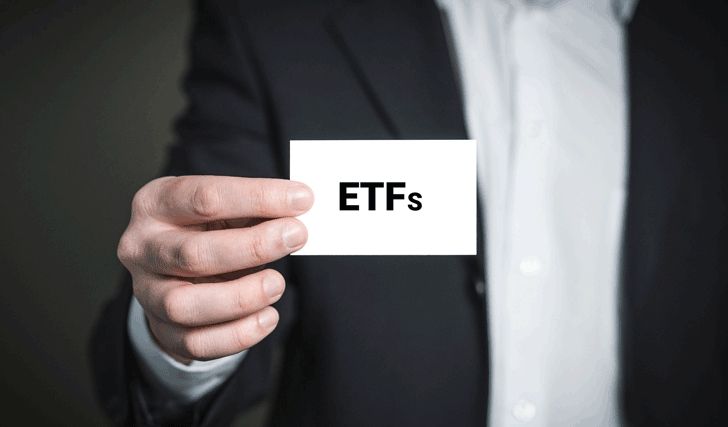The Investment Funds Institute of Canada (IFIC) passed some major milestones in 2014: mutual fund assets under management topped $1 trillion and more disclosure and transparency rules came into effect. But a breakthrough of another sort took place at IFIC’s annual conference when, for the first time, members of Canada’s ETF industry were asked to participate in a panel, marking increased co-operation between the two formerly divisive groups.“The market has evolved,” said Joanne De Laurentiis, president and CEO of IFIC in explaining the friendlier attitude the investment funds industry has fostered recently with the Canadian ETF Association (CETFA).
Many of the larger firms that sell ETFs in Canada – particularly Bank of Montreal and Royal Bank – have always been members of IFIC. Blackrock, whose Strategic Portfolio Series of mutual funds are built with iShares ETFs, is now a member of IFIC as well, said De Laurentiis.
Regulatory change
“The other change that has happened is the regulatory side,” she said. “The regulators have started to harmonize the rules around mutual funds, pooled funds, investment funds, including ETFs. One of the big issues had been that they had different regulatory structures so they were treated differently, so there were questions around a level playing field. But as the mutual fund industry has moved into providing the passive strategies as well, we are really thinking of ETFs as strategies for the investor. Choice is important – that is really the message we want to get across.”
Distinctions remain
For his part, Howard Atkinson, president and CEO of Horizons ETFs Inc. and chair of CETFA, said he believes a funds industry association in Canada should represent all funds – from ETFS, to mutual funds to closed-end funds, similar to the way it’s done in the U.S. Atkinson acknowledged that there are now many issues of a regulatory nature that pull the two sides closer together, but said the distinctions are still there.
“The different issues for us were – and remain – educating the investors and advisors on ETFs and how they work. The perception is that ETFs are index-equity trackers and that’s something we have to change. We have a variety of asset classes with active and passive strategies,” said Atkinson. “So when Joanne invited me to speak as part of this panel and said this is the first time the head of an ETF association has ever spoken at IFIC, I was very flattered. So I think the…investment funds industry in general has noticed ETFs.”
IFIC recently reported assets under management (AUM) of about $1.13 trillion; CETFA has AUM of about $73 billion.
While De Laurentiis said “it’s a possibility” that the two sides will one day form a single organization, Atkinson wasn’t ready yet to commit.
Let’s date first
“Before we do anything like that, let’s make sure we understand each other. Let’s not just run out and get married right away, let’s date for a while and see how this would work.”
In the past, IFIC and CETFA had sparred over the issue of fees – with ETFs cited as the low-cost method of investing, as well as the value of active vs. passive management of funds.
Atkinson told the IFIC conference that those who aren’t very knowledgeable about the markets should start with ETF investing, saying that indexing is the best default. Doing so, he said, would help contain costs, provide asset allocation and eliminate active manager risk.
ETFs have evolved substantially since the 1990s when they were thought of only as passive investments purchased by do-it-yourself investors, said Rajiv Silgardo, co-CEO of BMO Global Asset Management, one of the largest suppliers of ETFs in Canada.
But Silgardo said most investors need both ETFs and mutual funds in their portfolios, “because that is the way you deliver the optimal tradeoff of risk and cost on the one hand and the return on the other hand.”
He also cited a recent report saying that advisors have a major role to play in investing – whether the product is mutual funds or ETFs. Silgardo, who has been in the investment industry for 31 years, has an advisor because he feels the advisor instills discipline in the investing process.
In an interview, Atkinson said more advisors are coming aboard the ETF bandwagon, adding that about $35 billion of the $73 billion of ETF assets in Canada are held through advisor accounts. Clients who use fee-based advisors, he said, are increasingly using ETFs.
International developments
Meanwhile, on the international funds industry front, John Brogden, CEO of the Financial Services Council in Australia, told the conference his organization is pleased opposition attempts to repeal recent changes to the Future of Financial Advice (FOFA) initiative have been shut down by the new Australian government.
But Brogden said there have been further scandals in financial advice in Australia recently and “on a public level, we are in a world of hurt.”
As well, Brogden expected a report on churning in the life insurance industry to bring about an eventual ban on commissions, bringing insurance products onside with mutual funds. (According to news reports, the Australian Securities and Investments Commission released its findings Oct. 9, stating that one in three advisors were more focused on gaining commissions than serving the needs of their clients and that nearly 40 per cent of advisors it surveyed failed to comply with the law when selling life insurance products.)
The Australian government brought in FOFA, effective July 1, 2013, banning embedded commissions for investment financial products, but not life products.
“Our regulator has declared that disclosure is dead, that Australians are clearly too stupid to read a statement and too stupid to understand how to take risks and need to be completely controlled by the state. The only way that is achieved is through the evolution of commissions and other fees.”









